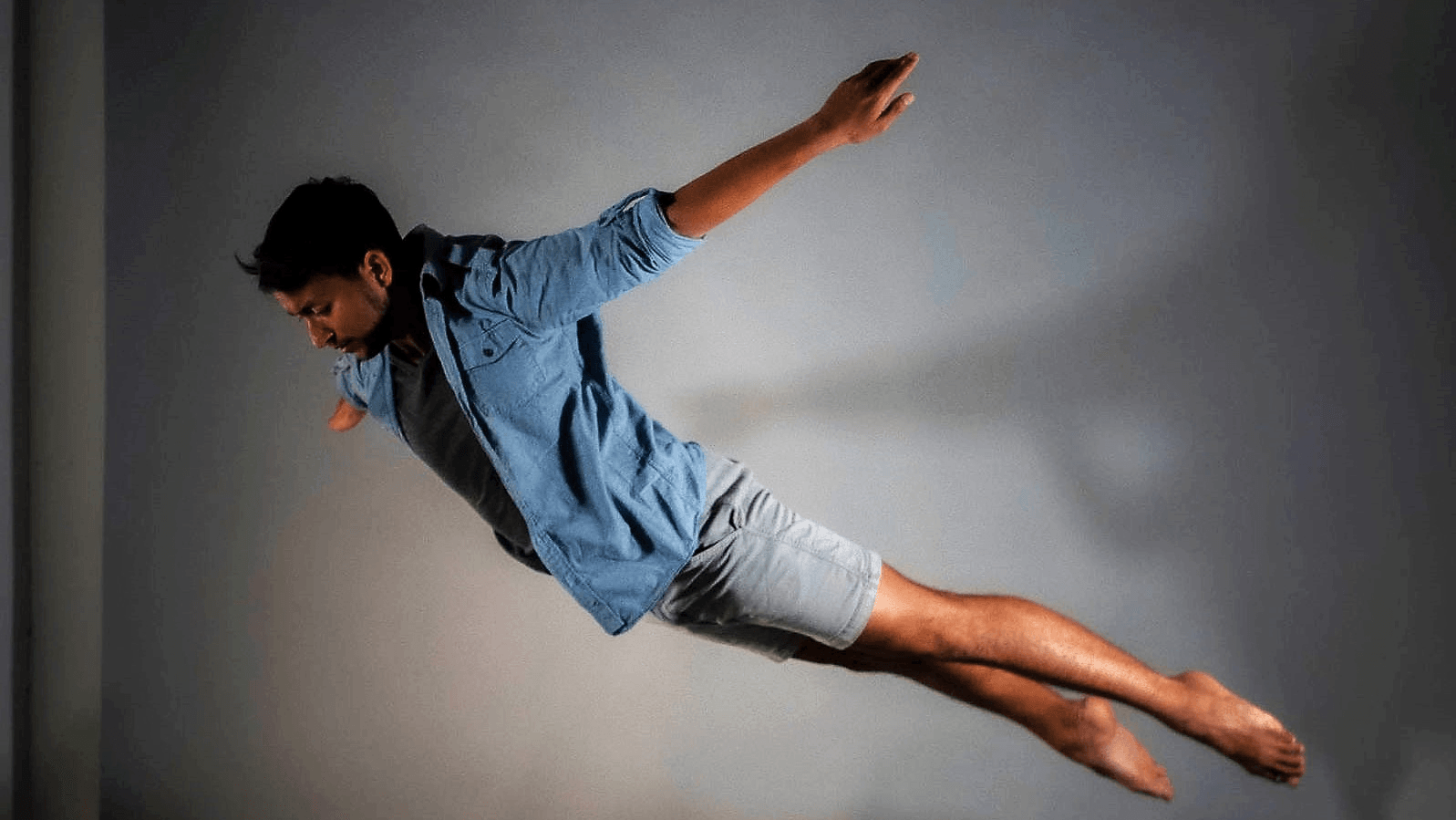
Juan Ventura on Dance Science and performing with Lady Gaga
Fulbright Scholar Juan Ventura discusses the importance of good healthcare for dancers and reflects on his first year at Trinity Laban.
What leads a professional dance artist into the field of medicine? For Juan Ventura, his passion for performing arts medicine, research, and arts in health motivates him to empower dancers with healthcare for career longevity. Juan is a first-generation Salvadoran American, queer dance artist, and fourth-year medical student at the University of Texas Medical Branch. He is currently completing his MFA in Dance Science at Trinity Laban to inform his future practice as a physician and researcher. Juan’s research experience includes investigating treatment-related outcomes in cancer patients and risk factors for adverse events in aging Mexican Americans, made possible through funding from the National Institutes of Health, Sealy Center on Aging, and the Robert A. Winn Clinical Investigator Pathway Program. Alongside his academic pursuits, Juan has danced with several dance companies including Open Dance Project, Noble Motion Dance, and Galveston Ballet, among others.
You started your career as a dance artist and have performed in a Super Bowl Halftime Show with Lady Gaga. What was it like to share the stage with one of pop music’s greatest legends?
It was honestly such a phenomenal experience. We were really fortunate. Lady Gaga’s production team reached out to some local dancers and performers. The colour guard ensemble that I used to perform with was asked to take the stage with her. It felt like I was essentially coming out of retirement from colour guard – I was taking a break for the time being, but was able to take part in the show. It was such a great experience. It gave me a whole new appreciation for Lady Gaga and I really enjoyed being part of this huge team setting too.
How did you first find out about the Fulbright scholarship and how has it helped you in your career?
I was at the International Association of Dance Medicine and Science in 2017 and it was hosted in Houston, where I grew up and completed my undergraduate degree. I first saw Trinity Laban at the conference and I was super impressed. I started looking at the degrees the conservatoire has and found out that it has the very first Dance Science programme, so I knew that I wanted to go and study there one day. I met one of the Dance Science alumni, and was convinced that I wanted to attend Trinity Laban.
It’s really helped me in my career journey – the Dance Science course is really robust. Despite having a very decent quantitative research background, the course really helped me build on it and learn about mixed methods – how we can use these within the context of dance and being a healthcare provider. This is great, as I know that I want to work on both the clinic and research side to try and make healthcare better for dancers.

What inspired you to explore the intersection between dance and health?
A lot of inspiration came from my own experiences trying to navigate healthcare as a dance artist. I used to work in a dance theatre company and then did a lot of freelance work. In the United States, if you don’t have health insurance, it’s really hard to go and get any kind of body healthcare treatment. Going to my own GP and seeing that some of my concerns were being dismissed or not even addressed was really frustrating, especially when this was something that could impact my career and livelihood. I knew that I wanted to be able to be that source of help for other dancers and provide something that I felt was missing for myself.
Your project involves assessing dancers’ understanding of injuries and providing informative workshops to empower safe dance practices. Tell us more about it.
Drawing from my own experiences, I knew that I wanted to look at doing surveys and questionnaires to get an idea of the healthcare base decision-making that dancers have done. I also want to conduct interviews to look at the experiences and perceptions that dancers may have regarding healthcare and injuries. I will use the data I’ve gathered to guide workshops that’ll discuss risk for injuries and help dancers take charge. The workshops will empower dancers and promote safe practices for career longevity. Hopefully, they’ll be able to understand that different things and actions could make them more risk-free or prone to injury, or have an impact on their dancing that they just didn’t realise before.
What are some performances you’ve enjoyed taking part in at Trinity Laban?
I’ve taken part in some of the postgraduate Choreography student assessments which has been super fun. Dancing with fellow students and working in different ways, as there are challenges for each of these different assessments – you’re working with multimedia, interdisciplinary work – has been super fulfilling. Getting to know my classmates in this setting has been really fun too. I also took part in the opera production of Dido’s Ghost, which was so much fun, such a blast. Meeting some of the music students at Trinity Laban was great. Dido’s Ghost provided a wonderful opportunity to work with them in an innovative setting and production.
